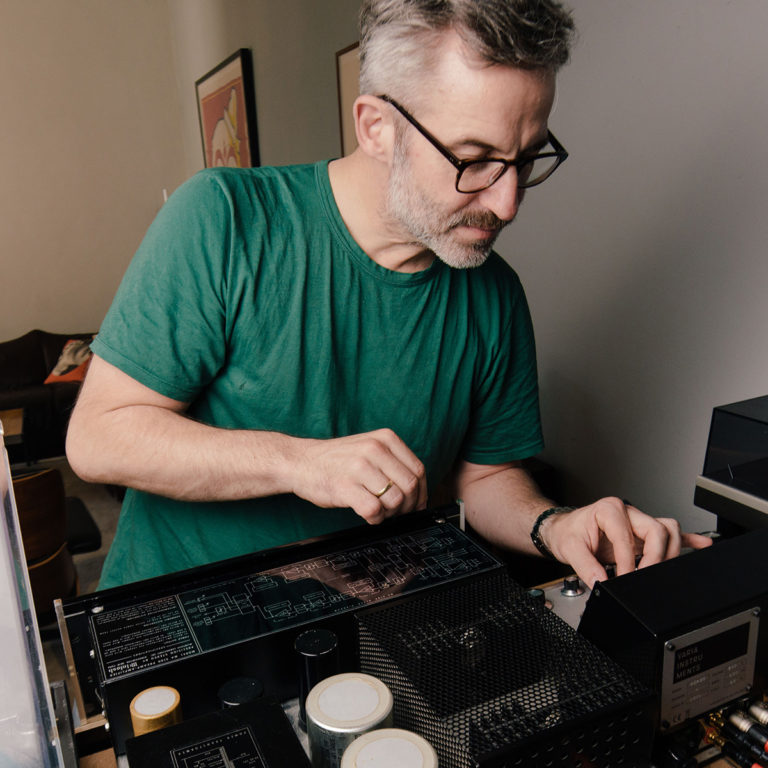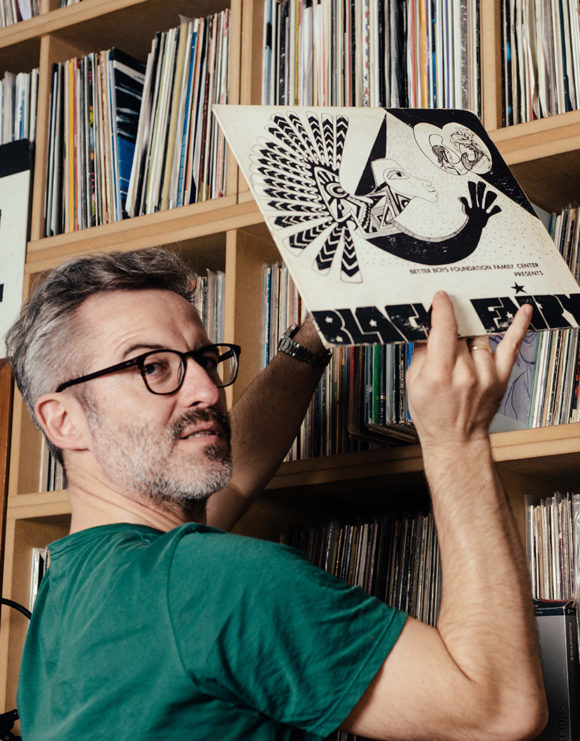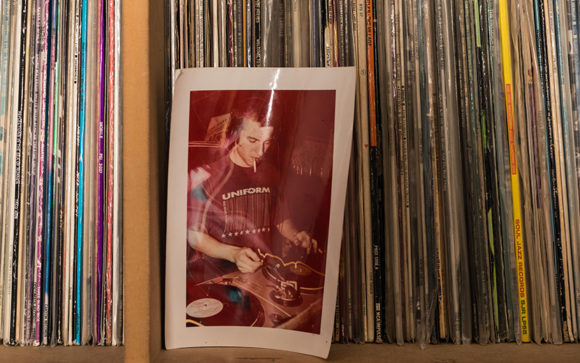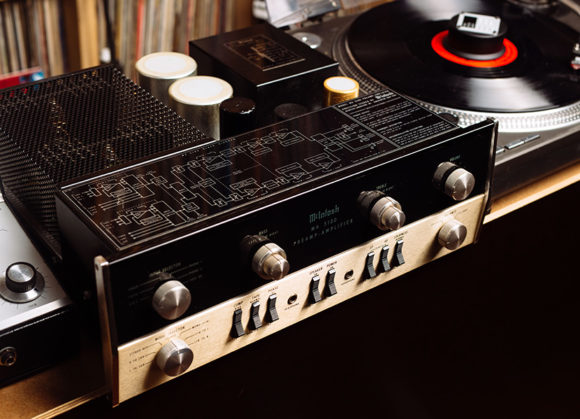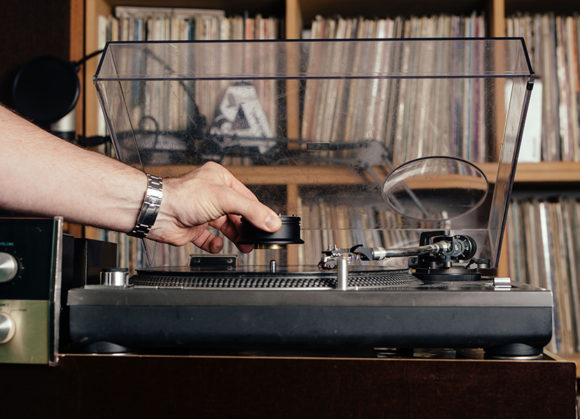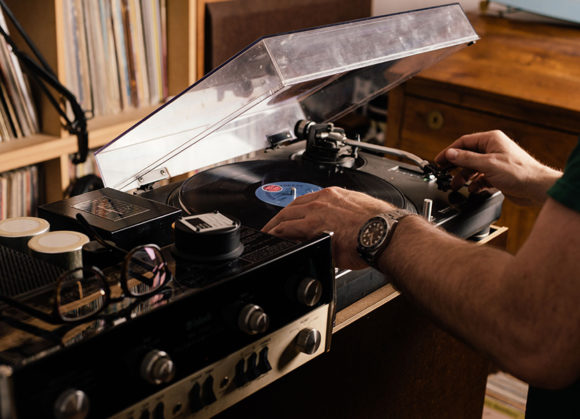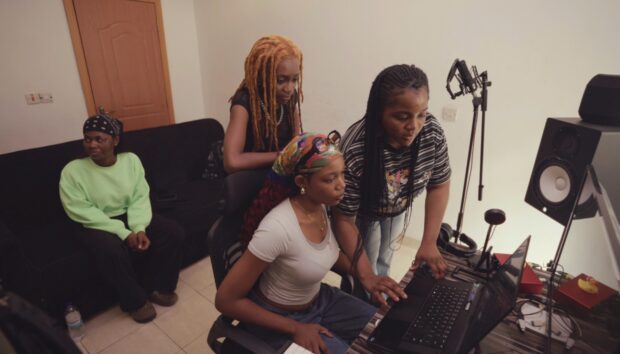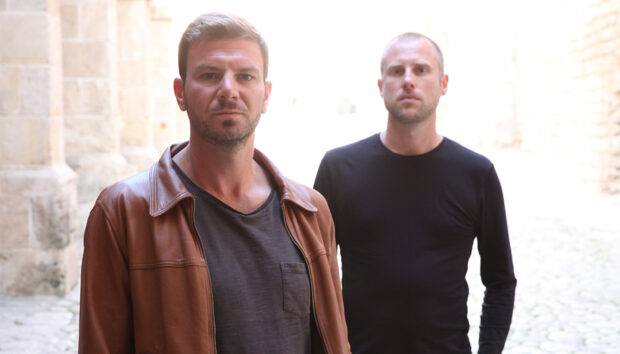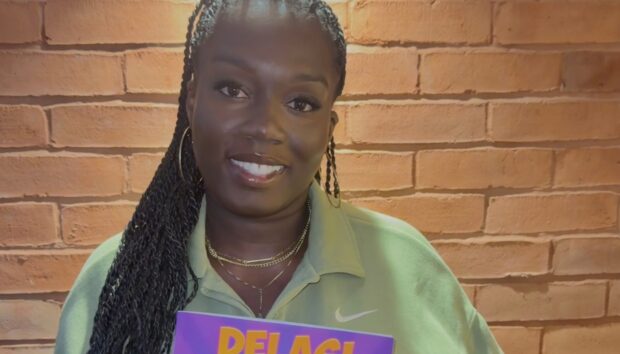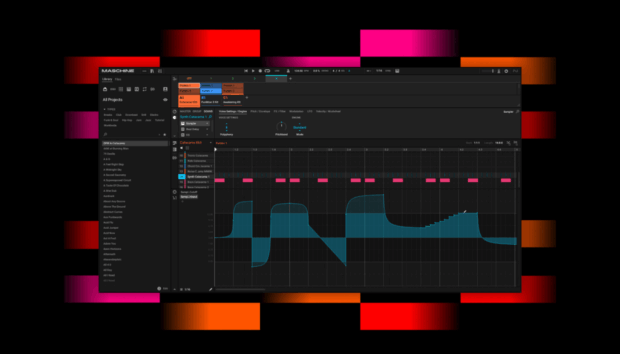What started out as just a local Berlin-based crew back in 1995, quickly turned into an internationally-known collective of DJs, producers, and music lovers. Jazzanova members Alex Barck, Claas Brieler, Stefan Leisering, Axel Reinemer, and Jürgen von Knoblauch were brought together through a pulsating eclectic club-scene in Berlin that combined funk, jazz, disco, and Latin sounds with deep house and hip hop.
With the help of Jazzanova’s studio and production unit, Stefan Leisering and Axel Reinemer, they produced their first records in order to add something new to their DJ sets. Those first releases quickly resulted in international success and global gig requests. Early support, collaborations and remix requests came from Gilles Peterson, Âme, Dixon, Capitol A, Azymuth, 4 Hero, Madlib, and many, many more.
Having worked as a DJ in the Berlin scene for over two decades, Jazzanova’s Alex Barck has seen a great number of hypes and short-term trends come and go. Still an old school crate-digger to this day, Barck has found a way to combine digital DJing with his love for the analog. To find out how he goes about digitizing his record collection to play out with TRAKTOR PRO, we visited the living DJ-legend in his Berlin apartment to find out more.
Before we dive deeper into the digitization process, could you tell us a bit about your background and your career in DJing to date?
Before I found my way into DJing, I was just a basic music lover. I then started to accumulate a lot of vinyl when I was younger, as it spoke to me in a very special way. There was also this extra hype in the GDR [former East Germany] to own something on vinyl that was not readily available.
Then, when the Wall came down, I literally had tears in my eyes. I was standing in a real record store on the western side of Berlin for the first time. I went completely crazy and spent all my Begrüßungsgeld (‘welcome money‘) in City Music at Kurfürstendamm.
Back then, flea-markets in Berlin still had a lot of interesting things to offer. As an early bird by nature, I was able to find tons of rare records – a lot of eastern-European jazz and things like that which you could then trade with someone for a certain American jazz record. I was essentially just a record collector until someone came up to me and said, “Now you have to DJ”. So that’s what I did, to finance my obsession for buying records.
At the time I was also studying Engineering and Psychology in tandem but didn’t finish my degree as I was just too tired from the nights playing out. The whole Jazzanova thing was starting to gather momentum around that time and we had a lot of gigs coming in too. Music basically ruined my academic career [laughs].
Do you still buy records?
I’m still a passionate record buyer. The only thing that has changed is the way in which I buy records. Back in the day you actually had to buy everything on vinyl, including the simple tools you only use for DJ sets. Nowadays I wouldn’t buy a record that was only made to be carried around in your record bag for no longer than a month.
I don’t necessarily need to buy every single 12” there is. Rather I go for a record that is good and timeless. I’m always on the hunt for good songs. Back in the day, you had to buy those club-tools on vinyl because there simply wasn’t any other format you could play them on. This is different now. Those tools are now often available as digital files straight away, and there’s no need for me to buy them on vinyl.
Now I only buy records that I really like and think I need to have; Timeless records, those are the ones I’m going for.
What made you opt for TRAKTOR instead of sticking to vinyl?
Travelling with your records is, of course, nice. It’s like having all your babies with you all the time. But it’s also quite dangerous. They can always get lost somewhere along the way. I had massive problems with missing record bags. It just stops being fun when you’re worried all the time.
I was once touring North-America where a big bunch of my records got stolen straight out from the booth while I was playing. They were really valuable as well. A big stack of rare disco and original pressings. Taking that risk again, just to have that authentic vinyl feeling isn’t enough for me, to be honest.
Playing only CDs wasn’t an option for me, so I began looking for alternatives. At that time digital vinyl systems were becoming popular and more reliable. Then I came across Traktor. At first, I was only using control vinyl until Christian Prommer [chief sound engineer at Red Bull Music Studios, Berlin] came up to me and said, “You can use Traktor using only CD-players, directly, without the box in-between”. That was a game-changer for me. This way I could just use the USB-port on the CD-player without having to carry an extra soundcard, while also having pretty-good control over your tracklist.
That’s basically the way I mostly play nowadays. I think it’s the music that counts and not the medium you play it on. I still buy more records in a week than others do in a whole year.
I’ve been doing radio since ‘97 and working with digital files makes my life a lot easier in that aspect. Essentially, I’m a radio-DJ who also gets to play clubs from time to time [laughs].
If I had to pre-produce all my shows with vinyl it would be an editing nightmare. Recording all those records for hours and hours. And then start from scratch if the needle skips or there’s a mistake? That doesn’t make sense.
It also depends on where you’re coming from. I’m glad I got to see how it was growing up in the East, but also how the West was after the Wall came down. I think it’s a nice analogy for DJing. I’ve seen both sides, playing with vinyl and going the digital route. Both things have their advantages. You just have to make the transition. Something is obviously easier for the younger generation.
Do you digitize all of your records?
I scan every record that I buy. Also, I regularly browse through my collection and look out for tracks I can play out. Those tracks I then record using good pre-amps and needles. Eventually, I EQ certain records a bit with my Varia rotary mixer, as some older records have weaker highs or lows.
I’m at this point right now, it’s almost like I want to have a digital copy of every record I own. I get excited if a record that I buy includes a download code, then I think to myself: “Hey, thanks for thinking of people like me!”. I make sure every record I buy has at least one or two songs that I want to feature in one of my radio shows or DJ sets.
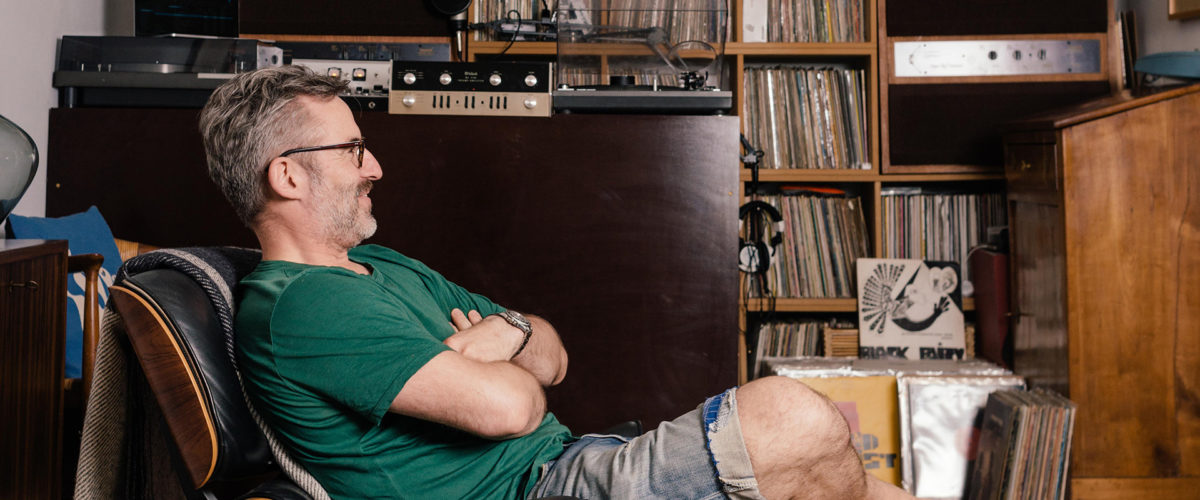
Do you edit the files?
Sometimes I do if I think it’s necessary. All in all, I’m not big on edits, though.
Traktor is a powerful tool, it’s possible to nicely blend a jazz piece with a boogie track for example. It’s possible to play with different tempos while keeping the same tone. Let’s say you want to bring in a track that starts with a continuous string sound and while mixing that in, you can slow it down drastically without messing with the tonal pitch itself. This way you can jump from let’s say a 120BPM track down to 100BPM and it’s not noticeable since the pitch of the song didn’t change.
What does the recording process look like? Any essential gear you use?
I use a standard Technics 1210 turntable. Unfortunately, the needle I use is no longer in production, it’s a Shure V15 VxMR. Our mastering engineer once described it as an all-round tool. You can still find them on eBay here and there. There are a lot of audiophiles who really miss this system.
I then go directly into my Varia RDM20. It’s a Swiss-made rotary mixer with a high-end approach. It has a fun little nerd feature, too. There’s a picture of David Mancuso carved into the circuit board, but you can only see it if you open up the mixer. From the rotary mixer, I go straight into the RME Fireface UC soundcard. For recording I use Logic. I also do all my radio pre-productions in Logic.
Using a vinyl weight during the recording process is also important, it reduces certain vibrations and oscillations. And I don’t mean that in an esoteric way.
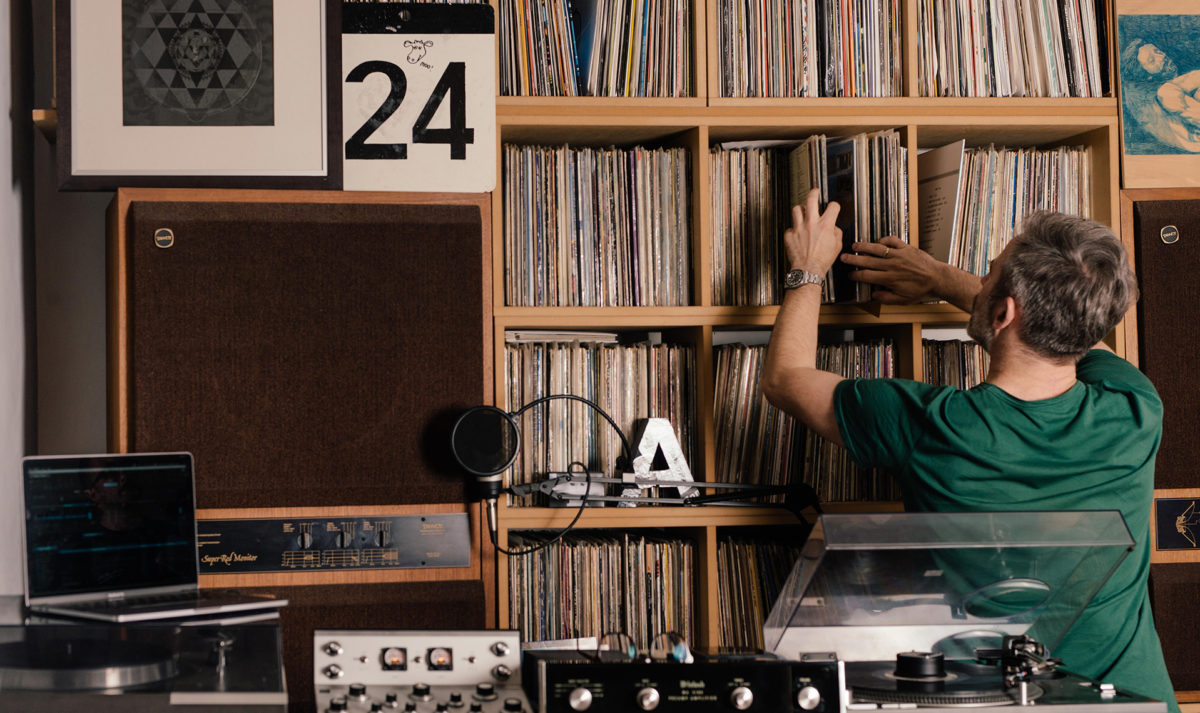
How do you arrange the tracks in your TRAKTOR library?
Normally, I arrange the songs according to the date I receive them or add them to the library.
That’s the best orientation for me and I also know what’s new and what’s old. The rest I find via the library’s search engine. I always have to remember all the names and songs for my radio shows anyway, so I got really good at remembering the good stuff. That’s my crossword puzzle, it keeps my brain fit [laughs].
I also have genre folders, but I don’t arrange tracks to pitch. When preparing radio shows I sort the tracks to matching tempos. I actually flirted with the idea of harmonic mixing briefly but quickly realized that I want to keep up some of that old school spirit and not have everything prepared and ready. I need a certain amount of pressure while DJing, having a few non-perfect transitions here and there makes it more human and I think people on the dance floor appreciate being reminded that there’s a human being playing the music. I have heard DJ sets where everything was so perfectly tight, synced, and prepared. It was almost robotic. That’s not my style. At some point, it loses character.
Funnily, I had DJ sets where everything was tight, all the transitions where perfect, each track matched the last one but people didn’t react to that at all. And then I have nights where I felt like I messed up everything there was to mess up and people went crazy and complimented me after the set.
Photo credits: Camille Blake








